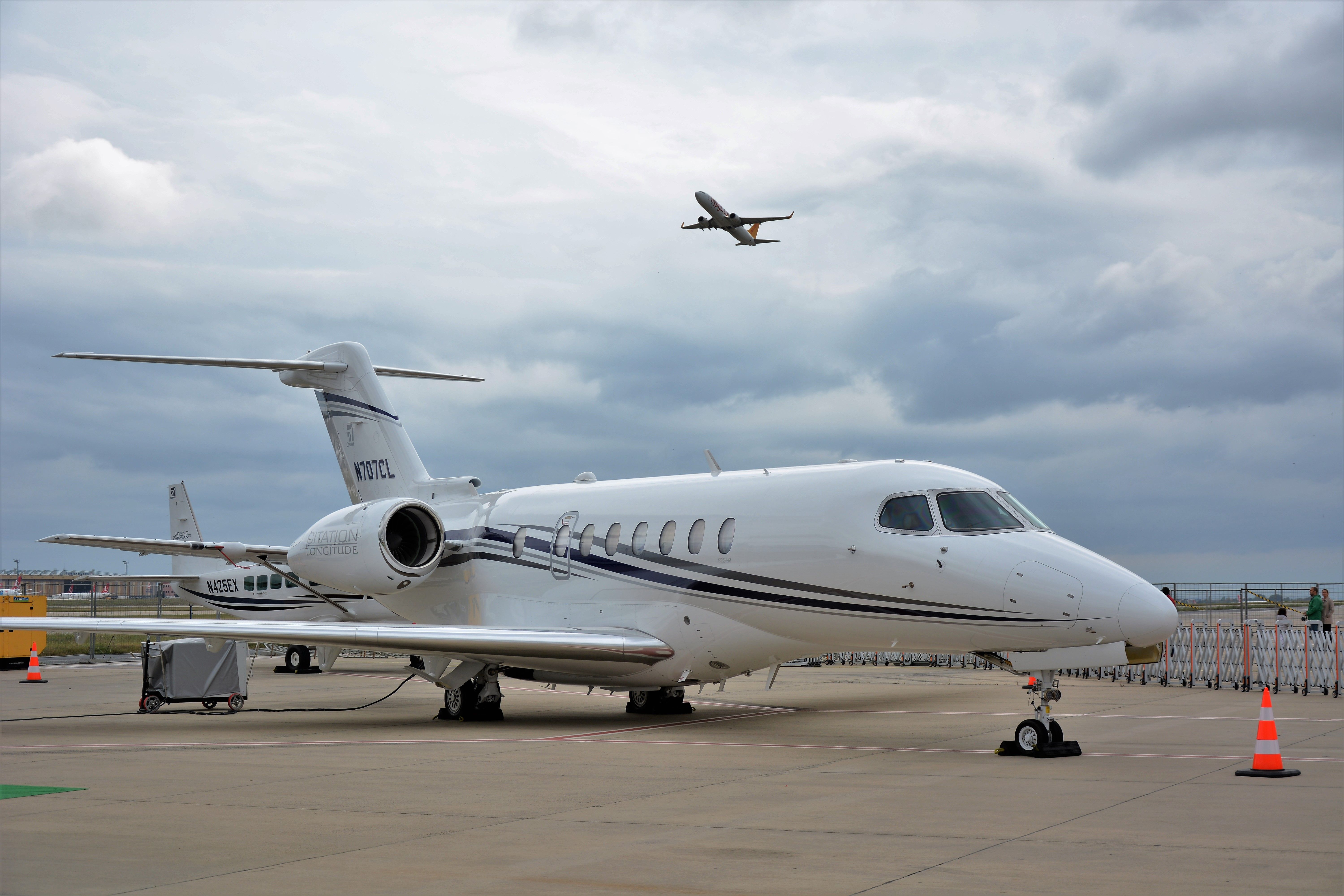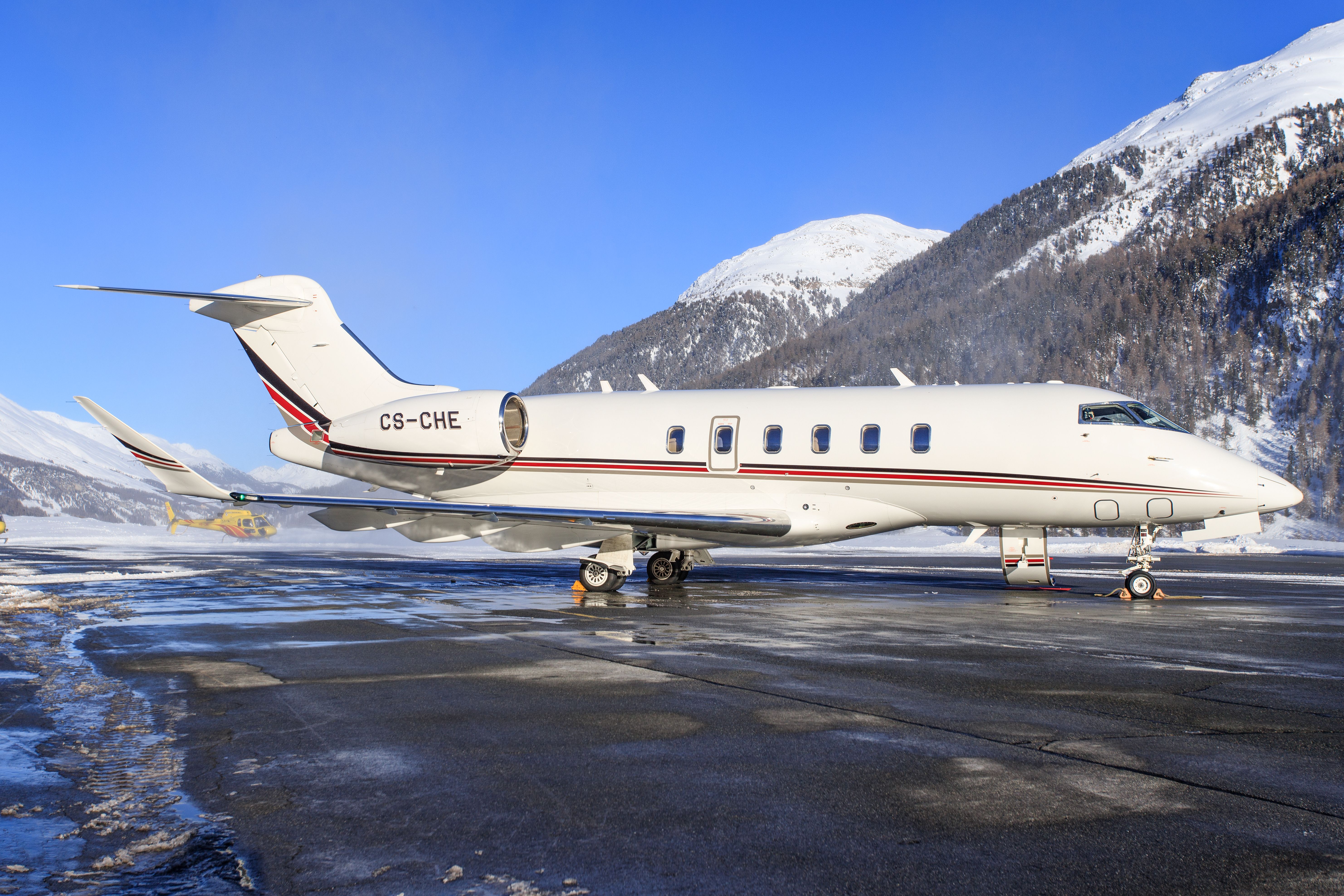Summary
- Cessna dominates the US private aviation market, owning 35% overall and nearly 61% in midsize jets.
- Bombardier holds a 12.5% market share but only overlaps with Cessna in the midsize jet market.
- Cessna’s Citation family dominates the light jet market, while Bombardier offers larger jets in the Challenger family.
Bombardier and Cessna are both responsible for two of the top three percentages of US private aviation market share. Cessna had over 35% of the private jet market and nearly 61% in the midsize jet category in 2023. Bombardier has a 12.5% market share of the United States private aviation market. However, these two large aviation manufacturers have an overlap only in the midsize jet market.
Cessna dominates the light jet market and is significantly represented in the midsize jet market with its Citation family of aircraft. These variants of aircraft range from smaller CitationJets to larger Citation Longitude aircraft, although this is still considered a super-midsize jet. Bombardier offers much larger jets, with its smallest aircraft in the Challenger family still remaining a midsize jet. Its largest offering in the Challenger family was still represented as a super-midsize business jet. Let’s take a closer look at both the Cessna Citation and the Bombardier Challenger family of aircraft and how they compare.
Cessna Citation
This family of business jets began with the Citation I, which was first introduced in 1972. The family of aircraft is split into three major fuselage cross-sections that have developed into over 8,000 total jets.
Photo: InsectWorld | Shutterstock
The Citation I developed into the CitationJet (CJ) set of aircraft. Currently in production are the M2, CJ3, and CJ4. The CJ variants dominate the light business jet market, with over 2,000 being produced since 1991. These aircraft can hold between seven and ten passengers over a range of 1,550 nautical miles (1,783 miles) to 2,165 nautical miles (2,491 miles). These aircraft have a cruise speed ranging from 404 knots (464 miles per hour) to 451 knots (519 miles per hour).
The Citation III eventually developed into the Excel, XLS, and Sovereign. Currently, the XLS is in production, with the newest variant, the Citation Ascend, set to begin deliveries in 2025. The XLS can hold nine passengers, whereas the slightly longer Sovereign can hold 12 passengers. These aircraft have a range of nearly 1,900 nautical miles (2,138 miles) and 3,200 nautical miles (3,700 miles), with cruise speeds up to Mach 0.80 (613 miles per hour) for the Sovereign.
Photo: BAHADIR ARAL AVCI | Shutterstock
The largest set of Citation jets are the Longitude and Latitude. The Latitude was first introduced in 2015, and the slightly larger Longitude was introduced in 2019. The Latitude can seat nine passengers in its 72-inch cabin height. The aircraft can reach a top speed of 446 knots (513 miles per hour) for a range of 2,700 nautical miles (3,100 miles). The Longitude is 10 feet longer and can also reach a higher cruise speed of 483 knots (556 miles per hour). Its range was also increased to 3,500 nautical miles (4,028 miles).

How Much Does A Cessna Citation Longitude Cost?
The price of Cessna Citation Longitude is on par with the competition.
Bombardier Challenger
The Challenger is split into three sets of aircraft, although only two of them are currently in production. The first Challenger was originally conceptualized by Bill Lear and developed by Canadair. The Challenger 600 was produced beginning in 1980 and continued production even after Bombardier bought Canadair in 1986. It was also stretched into the CRJ regional airliner in the early 1990s.
The aircraft has gone through several variants through the years, including the Challenger 650, which is currently in production. The Challenger 650 can fit up to 19 passengers and has a cabin height of six feet. It has a maximum range of 4,000 nautical miles (4,600 miles) and a maximum speed of Mach 0.85 (652 miles per hour).
Photo: Mike Fuchslocher | Shuterstock
The smallest Challenger is the Challenger 300, yet it is still recognized as a mid-sized business jet. This aircraft was introduced in 2004 and can fit ten passengers. The newest variant of the family is the Challenger 3500, which has a maximum range of 3,400 nautical miles (3,912 miles) and a top speed of Mach 0.83 (636 miles per hour). This aircraft has the most overlap with the Citation family of aircraft.
The Challenger family also includes the Challenger 800 variant, which was produced from 2006-2012. The aircraft could hold up to 16 passengers, which classified it as a super-midsize business jet. The Challenger 850, the newest variant, has a maximum speed of Mach 0.85 (652 miles per hour) and a range of 2,811 nautical miles (3,235 miles).


![Cessna 525 CitationJet M2 [N95KL]](https://static1.simpleflyingimages.com/wordpress/wp-content/uploads/2024/01/shutterstock_661471732.jpg)



